Are you dealing with dampness in your home or building? A chemical damp proof course could be the solution you’re looking for. In this article, we will explore everything you need to know about chemical damp proof courses, including why they are necessary, the different types available, and how to apply them.
We will also discuss the safety precautions, drying time, and how to tell if the damp proof course is working. Whether you’re a professional or a DIY enthusiast, this article will provide you with all the information you need.
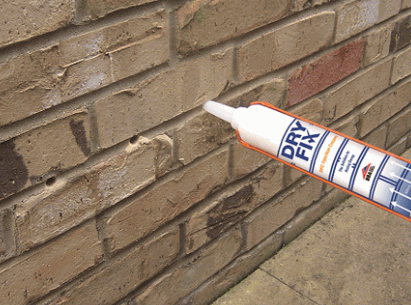
Contents
A chemical damp proof course is a crucial component of construction and building renovation projects, primarily utilized for waterproofing and moisture control in masonry structures.
Chemical damp proof courses play a vital role in preventing the ingress of moisture into walls and floors. This helps safeguard the structural integrity of buildings.
These courses are commonly applied alongside other waterproofing materials such as asphalt, bitumen membranes, and cementitious coatings. Together, they create a comprehensive moisture barrier.
By effectively mitigating dampness and moisture, these courses contribute to maintaining a healthy indoor environment. They also prevent issues like mold growth and decay, thereby extending the lifespan of the building structure.
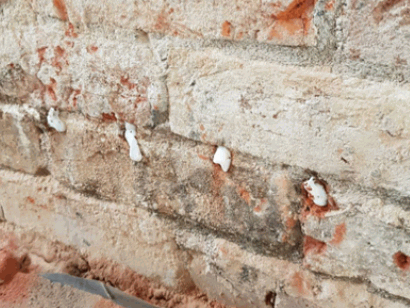
The application of a chemical damp proof course is necessary to ensure property preservation, safeguard building structures, and maintain their structural integrity, especially in combating issues such as rising dampness.
Chemical damp proof courses are vital for preventing moisture from seeping into building materials and causing damage, preserving the structure's longevity. In modern construction, they act as a barrier against water penetration, protecting the property from the harmful effects of dampness.
These courses play a crucial role in combatting rising dampness by impeding the upward movement of water. This contributes to overall building protection and reduces the risk of structural deterioration.
Explore further: Can You Paint Over Damp Proof Paint
Chemical dampproof courses come in various types, including liquid, cream, and injection methods, tailored to address dampness issues in masonry walls and combat penetrating dampness effectively.
There are various types of solutions available for addressing dampness in masonry walls, each catering to different scenarios. Liquid applications are ideal for larger surface areas, while cream-based solutions offer a targeted approach for localized issues.
For precise and controlled applications, injection methods are a suitable option. Each type has its own advantages, from ease of use to long-lasting protection, ensuring comprehensive defense against dampness in masonry walls.
The liquid damp proof course is a popular choice for treating dampness in masonry walls. This method utilizes waterproof membranes to create an impermeable barrier against moisture intrusion, especially in basements.
This approach provides an effective solution for preventing water ingress and dampness in below-ground structures. By applying a liquid damp proof course, the waterproof membranes form a durable protective layer that blocks the passage of water, safeguarding the integrity of the masonry walls.
This method is particularly advantageous in basement environments where the risk of dampness is higher due to the proximity to groundwater and soil moisture. The use of modern liquid damp proof systems has proven to be a reliable and long-lasting strategy for addressing damp related issues in construction projects.
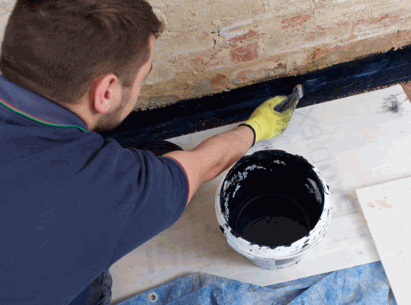
Cream damp proof courses offer a convenient application method for treating dampness in walls and floors. This forms a protective barrier that meets stringent construction standards.
Cream damp proof courses are a popular method for controlling rising damp. This involves injecting a cream substance into pre-drilled holes, creating a waterproof barrier within the masonry. It effectively impedes the upward movement of moisture, protecting the structure from potential damage.
Not only is this approach practical and effective, but it also adheres to industry regulations, ensuring the construction's integrity and longevity. Its ease of application and durability make it a reliable choice for damp proofing.
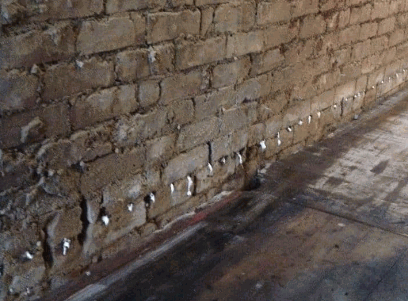
Injection damp proof courses are widely used for structural repair and are essential for compliance with building codes and property inspection standards.
Injection damp proof courses play a crucial role in preventing moisture ingress and dampness within building structures. This helps ensure long-term structural integrity by creating a barrier against water penetration.
These courses are effective in protecting the building fabric from damp related issues, such as decay, mold, and deterioration. They also provide a cost-effective solution for property owners to meet regulatory requirements and maintain a healthy living environment. Their application is instrumental in ensuring the longevity and safety of buildings.
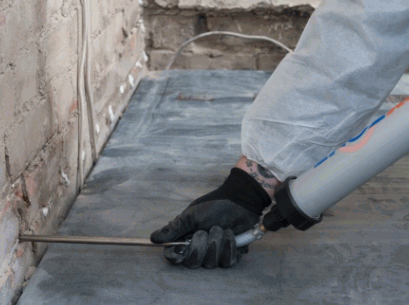
The application of a chemical damp proof course necessitates meticulous surface preparation and adherence to specific application methods, often carried out by construction professionals following comprehensive waterproofing instructions for optimal building maintenance.
Surface preparation is essential for the success of the damp proof course. This involves thorough cleaning and repairing any damaged areas, as well as ensuring the surface is free from contaminants.
Professional application methods, such as spraying or brush application, are commonly employed to ensure even coverage and penetration. It is crucial to follow waterproofing instructions to guarantee the effectiveness of the damp proof course in preventing moisture ingress and safeguarding the structural integrity of the building.
The initial step in applying a chemical damp proof course involves thorough surface preparation, which should be conducted with utmost care and attention to construction safety, often overseen by property owners to ensure proper masonry care.
This entails inspecting the masonry for any existing dampness, mold, or cracks and addressing these issues beforehand. The surface should be free from any debris, dust, or efflorescence, and appropriate cleaning methods such as wire brushing or power washing may be required.
Property owners need to take note of any signs of water ingress, as these could indicate underlying structural problems that must be resolved prior to the damp proof course application. It is crucial to follow the manufacturer's guidelines and wear personal protective equipment when handling chemical solutions to protect against potential hazards.
Selecting the appropriate product for the chemical damp proof course is crucial, requiring adherence to specific construction practices and building regulation compliance to ensure effective concrete protection.
This critical selection process involves considering factors such as the type of structure, environmental conditions, and material compatibility.
The chosen product must align with industry standards and regulations to prevent moisture ingress and subsequent structural damage. Durability, ease of application, and long-term performance should be taken into account.
By choosing the right product, construction professionals can guarantee the integrity and longevity of the building while maintaining compliance with essential construction guidelines.
The application of the damp proof course demands precision and expertise, often necessitating property surveys and the involvement of construction technique experts to ensure the effective treatment of walls.
During property surveys, careful assessment of the building's structure and potential sources of dampness is conducted to determine the most suitable application method.
Construction technique experts play a crucial role in selecting the appropriate materials and techniques, considering factors such as wall composition and environmental conditions.
Achieving optimal treatment for walls requires a deep understanding of moisture dynamics in buildings and the application of specialized construction methods to prevent and control dampness effectively.
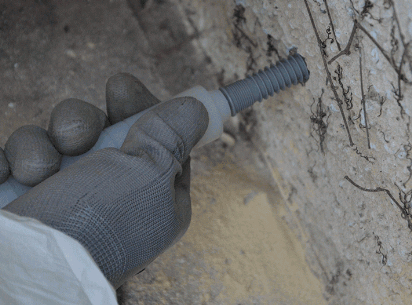
After application, the sealing of the damp proof course is essential and often overseen by property care professionals to ensure proper maintenance for floors and effective basement waterproofing.
This sealing process plays a critical role in preventing moisture from seeping into the building's structure, thus safeguarding it against potential damage like dampness, mold, and decay.
Property care professionals have the expertise to inspect, repair, and maintain the damp proof course, thereby ensuring that the foundational integrity of the property is preserved. By addressing any issues with the sealing, these professionals contribute to the longevity and structural stability of the building, ultimately enhancing its overall value and livability for occupants.
When applying a chemical damp proof course, strict adherence to safety precautions is essential. This includes following construction safety standards and facilitating seamless property inspections overseen by property managers.
To ensure safety, it's important to wear adequate personal protective equipment such as gloves, safety goggles, and respirators to protect against potential contact with harmful chemicals.
It's crucial to carefully follow the manufacturer's guidelines for application, including proper ventilation and the use of appropriate tools. Regular inspection of the application site for any potential hazards or leaks is also important to mitigate risks and ensure the safety and integrity of the property's structure.
The drying duration of a chemical damp proof course varies and is influenced by the specific curing process implemented, often supervised by building contractors in collaboration with construction practice specialists to ensure effective structural repair techniques.
When it comes to damp proofing, it's important to take into account environmental factors like temperature and humidity. The type and thickness of the material used for the damp proof course also need to be carefully considered. Building contractors and construction practice specialists are key in assessing these variables and determining the best curing process to speed up drying and provide lasting protection against moisture. Their expertise also helps in selecting the right materials and application techniques, maximizing the effectiveness of structural repairs.
Identifying the signs of a working chemical damp proof course is essential, as it signifies successful rising damp prevention, often overseen by property owners seeking home improvement and optimal waterproof membrane installation.
One key indicator of an effective chemical DPC is the absence of damp patches or stains on the interior walls. The lack of musty odors and the presence of dry and intact wall surfaces further demonstrate the efficacy of the damp proof course. Property owners can also gauge its effectiveness by monitoring the stability of plaster and paint, as a properly functioning DPC prevents moisture from affecting these finishes.
While the application of a chemical damp proof course can be complex, it can be conducted by non-professionals under the guidance of building engineers and damp specialists. This process requires a strong understanding of the property's structure and the specific chemical compounds involved.
Non-professionals should seek consultation with building engineers and damp specialists to ensure that the chosen chemicals are suitable and effective for the property's unique requirements. Gaining insights into local building regulations and standards is essential to guarantee compliance and long-term efficacy.
By collaborating with experts, non-professionals can navigate the complexities of applying a chemical damp proof course while ensuring the overall success of the property development project.